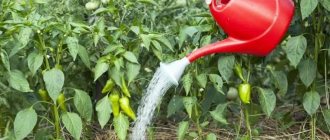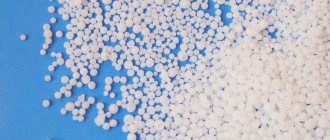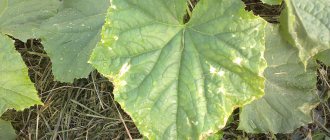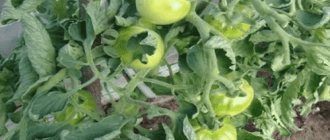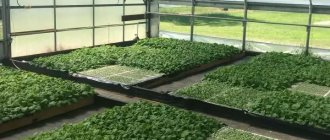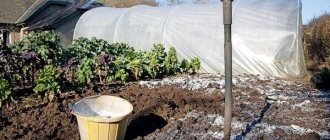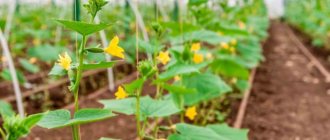Stationary greenhouses are simply an indispensable help for summer residents who are engaged in vegetable growing. After all, they not only protect vegetable crops from unfavorable weather conditions, but also allow for an earlier harvest.
Tomatoes, which are a heat-loving crop, are often grown in greenhouses. However, this method in itself does not relieve the summer resident from the need to care for plants. Tomatoes definitely need fertilizing for normal development and growth. The procedure for applying fertilizers for this crop in a greenhouse has its own characteristics.
Feeding tomatoes during flowering
The tomatoes have now begun to bloom profusely, and somewhere the first cluster has already begun, somewhere else the flowering is just beginning. The picture may be different for everyone and it depends on the variety and weather conditions. But in general, now is just the time when you need to start fertilizing with root and foliar fertilizing.
Typically, the first fertilizing is carried out 10-15 days after planting seedlings in a greenhouse, which is carried out with nitrogen fertilizers. This is necessary so that the plant quickly adapts and increases its vegetative mass and root system. With the beginning of flowering, plants need less nitrogen, the emphasis is on phosphorus-potassium fertilizers.
In order for tomatoes to bloom better, they need phosphorus. And if you see that purple leaves and stems have appeared on flowering plants, it means that the plants do not have enough phosphorus, and they take it from wherever they can. This can also happen when the greenhouse is too cold. In this case, there may be a lot of phosphorus, but it is not absorbed by the plant due to the low temperature.
The problem with tomatoes is that almost all the phosphorus is obtained through fertilizing. That is, as much of this element as the plant receives, so much fruit will be produced on it later.
Yeast fertilizer for tomatoes
Yeast itself does not contain those beneficial microelements important for plant growth, such as nitrogen, potassium, phosphorus and magnesium. Yeasts are the simplest single-celled fungi. When they enter the soil, they begin to process organic residues, which, when decomposed, begin to actively release into the soil the very elements necessary for growth, that is, nitrogen and phosphorus.
Therefore, it is better to carry out the first feeding with yeast, 10-14 days after planting the seedlings in the greenhouse. Take 100 g of pressed yeast and dilute it in a small amount of warm water. Add 1-2 tbsp. l. sugar and place in a warm place for a couple of hours. As soon as the foam rises and bubbles appear, dilute the dough in 10 liters of water, the water should be warm, the yeast will not work in cold water. Then dilute 1 liter of solution in 5 liters of water and water the tomatoes at the root, 1 liter for each plant.
Read more about how to properly use yeast and make fertilizer from yeast by following the link.
Root feeding with green fertilizer
It is better to fertilize the roots with green fertilizer. To do this, fill the container ¾ full with mowed grass, nettles and fill it with regular water from a hose. The container is placed in a warm place; it is best to place it directly in the greenhouse. It’s warm there, and the carbon dioxide released during fermentation is exactly what plants need. Leave the fertilizer to infuse for 3-5 days, it should sour well so that bubbles appear on the surface and an unpleasant odor from the infusion appears.
IN
It is important to remember that fertilizing is carried out on wet soil, that is, first water the plant with clean water, only after that do root fertilizing. Afterwards the ground is watered again with clean water.
The finished infusion is diluted at the rate of 1 liter per 10 liters of water, and then 1 liter of the diluted infusion is poured under each plant.
Foliar fertilizing with boric acid
Foliar feeding in case of abundant flowering is carried out with boric acid. I wrote about feeding strawberries with boric acid during flowering. The effect of tomatoes is similar, that is, boric acid contributes to better fruit set. This means the tomato harvest will be much better.
Packets of boric acid powder (10 g each) are sold in any pharmacy and gardening stores, and in the latter it is cheaper. To adjust the working solution, take half a teaspoon (0.5 tsp) of powder and first dilute it in a small amount of hot water, for example, in a glass. Boric acid crystals dissolve very poorly in cold water. As soon as the powder has dissolved, the solution is poured into a bucket with 10 liters of water, poured into a spray bottle and sprayed on the plants, trying to get the solution onto the flowering shoots.
By the way, cucumbers and tomatoes are often grown together in a greenhouse, so don’t forget to spray the cucumber flowers at the same time.
Some gardeners recommend shaking tomato bushes slightly for better fruit set. And it is better to do this in the morning, when the pollen is as heavy as possible and it is better pollinated.
Signs of a lack of micro- and macroelements
Deficiency of micro- and macroelements necessary for the normal functioning and fruiting of tomatoes should not be allowed. You can understand what they lack by looking at the plants themselves. External signs of nutrient deficiency:
- Nitrogen. Due to its deficiency, the growth of the bushes slows down, they begin to stretch out, the leaves become smaller, they have a pale green tint with yellowness, the stem becomes thinner and softens.
- Potassium. Signs of element deficiency are expressed in the curling of the tips of the leaves; they acquire a brown border along the edges.
- Phosphorus. Due to its lack, the color of the aboveground part becomes darker, the leaves become lilac with purple veins. It is possible to wrap the leaves inside.
- Bor. The leaves become lighter and curl.
- Zinc. Symptoms of microelement deficiency are expressed in fragile, rough, rough leaves, leaves may curl downwards, and orange-brown chlorosis may form on old leaves.
- Copper and sulfur. The lack of substances leads to the withering of the leaves, after which they can change their shade to bluish-green and curl into a tube.
- Calcium. The deficiency causes white veins to appear on the leaves and the leaves curl upward.
- Iron. With iron deficiency, the leaves turn yellow and droop, and in some cases they may curl.
How to feed tomatoes during fruiting
During fruiting, potassium is extremely important for tomatoes. Its lack is immediately visible in appearance. Necrosis begins at the tips of the lower leaves, which gradually spreads along the entire perimeter. Then brown heels appear, and the leaves begin to curl, fall off, and the stem becomes limp. You understand that in this state it is unlikely that the plant will be able to bloom and bear fruit.
And even without such signs of potassium deficiency, this mineral is extremely necessary during the period of fruit formation and ripening. It is fertilizing with potassium fertilizers that makes the fruits sweet and tasty.
Wood ash for better flowering and fruit set
Ash has a rich set of minerals useful for vegetables - potassium, phosphorus, calcium, magnesium, etc. Of all fertilizers, it is an environmentally natural mineral fertilizer.
For tomatoes we make root feeding with ash infusion. This is how they prepare it. For 10 liters of water, take 1 liter of dry ash, stir the ash in the water to obtain a homogeneous substance. Leave to infuse for 2-3 hours. After this time, filter the infusion if there are large coals left. The resulting infusion is watered at the roots of the tomatoes, pouring 0.5 liters under each plant.
Fertilizing with ash increases the flower mass, plants bloom better and set fruit. It is better to carry out such fertilizing 2-3 times per season, alternating it with yeast or spraying with boric acid.
All feedings are carried out at intervals of 1.5-2 weeks, and they should alternate.
Dry ash can be scattered under the plants on damp soil, watered with water and lightly loosened. This will not only enrich the soil with useful microelements, but at the same time get rid of slugs.
Also, during the formation of ovaries, it is necessary to carry out foliar feeding. To do this, in the evening or on a cloudy day, spray an infusion of wood ash over the dry leaves. It is prepared like this: dissolve 2 cups of sifted ash in 2 liters of hot water and leave to infuse for 12 hours. Then the resulting infusion is filtered. The resulting amount of liquid is brought to 10 liters with water and the plants are sprayed with this solution.
How to determine which minerals are missing
In order not to use unnecessary fertilizers for tomatoes, and not to waste energy, time and money on preparing solutions, you need to learn to determine the needs of plants :
- phosphorus - plants cannot easily tolerate cold, resistance to diseases and pests is sharply reduced;
- potassium – lack of potassium has a bad effect on the taste of fruits and the condition of the root system;
- nitrogen – if the plant lacks nitrogen, the leaves may turn yellow, the development of the plant’s vegetative system will stop, the roots will weaken, and the yield will decrease;
- calcium - leaves curl;
- magnesium and zinc – the leaves become dome-shaped, small, and may be covered with yellow dots;
- sulfur - the plants begin to fade, the leaves turn yellow on the upper side of the bush;
- boron tomatoes lose their ability to set fruit;
- copper - leaves become limp, turn white, new leaves grow with a bluish tint;
- manganese - the foliage acquires a variegated color, the veins are dark;
- molybdenum - the leaves become spotted in color, then the edges of the leaf curl inward or die off;
- iodine - plants suffer from fungal infections (brown spot, late blight, root rot).
Fertilizing tomatoes with mineral (phosphorus) fertilizers
A sufficient amount of phosphorus in the soil increases plant immunity to fungal diseases and weather stress. Healthy plants bloom better, set fruit, and taste better.
Mineral phosphorus fertilizers are poorly soluble in water, and it is better to use an aqueous solution for fertilizing. Therefore, fertilizers are first diluted in a small amount of hot water, only then the volume is adjusted to the required amount of water.
Fertilizing with magnesium sulfate
Many varieties respond very well to fertilizing with magnesium sulfate. 15 g of fertilizer (approximately 0.5 tbsp) is dissolved in 10 liters of water. The resulting solution is sprayed onto tomato tops. Consumption – 1.5 l per 1 sq. m.
Superphosphate for fruit set
For active fruit set, tomatoes respond well to superphosphate. It is better to apply simple superphosphate to the soil in the fall. And for fertilizing, take double superphosphate and make an extract from it. 3 tsp. superphosphate granules, pour 0.5 liters of boiling water, leave for 6-8 hours, stir the solution periodically. Then the upper liquid part of the jar is drained. Half of the extract is diluted in 10 liters of water. The resulting solution is poured under the root, at the rate of 0.5 for each tomato.
If tomatoes are grown in a greenhouse, it is necessary to take into account that the humidity level in it is higher than in open ground. Therefore, the process of absorption of nutrients occurs faster. And in order for the plant to have time to absorb them, you need to slightly reduce their concentration of fertilizers.
Complex mineral fertilizer "Master"
Master is a complex of fertilizers with a wide variety of microelements. Each species contains a specific set of them, which is suitable for a specific plant at different stages of its development.
Fertilizers are very easy to use; you just need to determine what microelements the plant needs.
Feeding tomatoes during fruiting is determined by the formula (nitrogen-phosphorus-potassium) NPK 15-3-30, which means:
- 15% - nitrogen,
- 3% phosphorus
- 30% potassium.
Nitrogen during fruiting is not so important, but it is necessary, since all efforts are devoted to the development of the fruits, but the stems are weakened and thinner towards the top, which indicates a lack of nitrogen, and potassium is necessary for filling the fruits.
But using this fertilizer alone, the effect will be small, since calcium is also needed, it is necessary to increase metabolism in the plant so that other microelements can be better absorbed. Therefore, the next day after feeding with “Master”, fertilize with Calzenite. These feedings are carried out for 6 days, according to the scheme
- Day 1 – Master NPK 15-3-30,
- 2nd day - Calzenite,
- Day 3 – Master,
- 4th day - Calzenite,
- Day 5 – Master,
- Day 6 - Calzenite.
Calzenite cannot be mixed with other complex fertilizers, otherwise an insoluble precipitate will form, that is, all the properties of calcium are lost.
Answers to frequently asked questions
Is it true that you can feed tomatoes with bone meal?
Right. Bone meal is obtained by grinding the bones of animals and fish. Such flour contains a decent amount of phosphorus, calcium, sodium, iron, zinc, magnesium and other biologically active substances. Within six months, the flour will decompose in the soil, providing nutrition for the tomatoes throughout the season.
Can green manure be used as fertilizer for plants?
Certainly. Crushed green manure, such as mustard leaves, is embedded in the ground before or during planting of seedlings. Mustard leaves are very disliked by the larvae of the cockchafer, which is capable of eating the entire root system of tomatoes. In addition, as green manure decomposes, it saturates the soil with micro and macroelements.
Organic fertilizers for feeding tomatoes in a greenhouse
Organic fertilizers are rich in nitrogen. Nitrogen is an essential element for plant development. It supports metabolism, is found in all plant cells, in proteins, amino acids, chlorophyll, plant hormones, and vitamins. It plays a huge role in plant nutrition. Its deficiency affects vital functions.
It is especially essential for young plants when leaves and stems are actively growing. But as they grow, the need for nitrogen decreases. Therefore, the first feeding of young plants is carried out with organic fertilizers. To do this, use any liquid organic fertilizers:
- slurry,
- infusion of chicken manure,
- herbal infusion.
Using liquid organic fertilizers, they are diluted at the rate of 1 liter of infusion per bucket of water (10 liters) and watered 1 liter for each plant.
As an alternative to organic fertilizers, you can use mineral fertilizers (urea, ammonium nitrate, ammonium sulfate), since they contain a sufficient amount of nitrogen. These fertilizers are diluted with 1 tbsp. l. (10 g) per bucket of water, consumption rate 20 g (2 tbsp.) per 1 sq. m.
Common mistakes
The most common mistake gardeners make is overfertilizing. The longer I feed, the more I will collect - the wrong principle. Excessive nutrition will lead to fattening of the tomato bush. The leaves will become larger, the stems will become thicker and stronger. However, in this case the plant forgets about the fruits.
You shouldn’t wait for a tomato to start asking for one or another microelement by its appearance. Knowing the scheme and timing of applying mineral and organic fertilizers, it is necessary to feed the tomatoes on time.
Ammonia - as a fertilizer for tomatoes
Ammonia has proven itself well in cases of nitrogen deficiency, as an ambulance. The advantage of using it is that nitrogen is here in an easily digestible form.
Dilute 2-3 tbsp. l. ammonia per 10 liters of water, watering at least 1 liter at the root for each bush. They feed again after 2-3 weeks, and this is enough to quickly cope with the lack of nitrogen.
Methods of application
Root feeding
A nutrient solution of the required concentration is applied under the bush during watering. It is also possible to embed granular mineral fertilizers into the root zone. The vegetable receives all the nutrients it needs for life through its roots.
Important! The method is most effective when growing seedlings.
Spraying leaves
An additional method for a faster effect is to spray the leaves with nutrient solutions.
It is important to consider the concentration of the solution. It should be 3-5 times weaker than root feeding to prevent leaf burns.
Feeding tomatoes with hydrogen peroxide in a greenhouse
Hydrogen peroxide is a good fertilizer for tomatoes. The results of its use can be seen in just a few days. Peroxide improves the structure of the soil and disinfects it. When used correctly, the product does not have a negative effect on either the fruit or the soil.
To prevent tomato diseases, foliar feeding is carried out by spraying the bushes. Dilute 10 tbsp. l. hydrogen peroxide per 10 liters of water, repeated treatments are carried out after 2 weeks. The treatment is carried out with a fine spray so that the leaves are treated on all sides. Treatment is carried out in the evening or during the day in cloudy weather, or in the absence of rain for tomatoes growing in open ground.
To treat the soil, apply root watering once a week, dissolving 50 ml of peroxide in a bucket of water. During the procedure, avoid getting the solution on the leaves. Before watering, first water the soil with clean water and then with the prepared solution. It is important that the soil is spilled at least 10 cm, so one plant will require at least 1 liter of solution.
Soil preparation
First you need to prepare the soil for tomato seedlings. There are many recipes for this mixture. Here is one of the most popular:
For 1 part of garden or turf soil (land on which nettles grew in summer is ideal), take 1.5 parts of humus, 1 peat, and 0.5 river sand. To ensure calcium balance, add 1 cup of crushed eggshells. Note that mineral fertilizers are not needed at this stage. They will be needed later, when it is necessary to feed adult plants for ovaries and fruiting.
Soil treatment
The resulting soil mixture must be steamed. This is done in different ways, from heating the bucket over a fire to the oven. Disinfection and destruction of fungi and putrefactive bacteria, as well as aphid larvae and the cessation of weed activity are achieved using this procedure.
Another way to clean the soil mixture for growing tomatoes from pests is to spill it with a pink solution of potassium permanganate. You will have to water in any case after the soil is placed in containers for seedlings, as water helps it settle and compact.
Iodine for feeding tomatoes
Iodine is no less important for normal growth and fruiting, as it accelerates the ripening of fruits and increases the quantity on the bushes. Its great merit is that it has an antimicrobial effect. By regularly spraying tomato bushes with iodine solution, you can prevent the development of late blight on tomatoes. In addition, thanks to the specific smell, insect pests will not fly close to the greenhouse.
To obtain a good harvest, foliar feeding is carried out with a solution of milk (it is better to take fatty milk) and iodine. Pour 1 glass of milk into a liter jar, bring the volume to 1 liter with water, and add 4-5 drops of iodine. The composition is stirred and sprayed on the leaves. It is best to carry out treatment in the evening after sunset, early in the morning or in cloudy weather. Follow the dosage of iodine, otherwise you can burn the leaves.
Watering tomatoes with iodine is carried out 3-4 times per season. The first time is carried out after planting the seedlings in a permanent place in the greenhouse.
In this case, such treatment will be very useful, because after transplantation the plant experiences stress, which impairs resistance to various infections. Watering a tomato bush with this composition will increase immunity and protect against fungal infections.
The second treatment is carried out when the ovaries begin to set. Subsequent treatments are carried out when the fruits begin to fill.
How many times per season should you feed tomatoes?
There are no clear instructions about the time of fertilizing and the amount of fertilizing of tomatoes. This depends on the characteristics of the particular variety and condition of the plants. Well-growing tomatoes in a greenhouse are fed 3-4 times per season, but if you understand from the appearance of the plants that they are missing some elements, then the amount of feeding needs to be increased.
Thus, “problem” plants (which develop poorly and get sick) are fertilized every 10-14 days. At the same time, root and foliar feeding is alternated.
If you prefer to grow plants without chemicals, feed your tomatoes with natural products. Read the best folk recipes for such dressings here.
